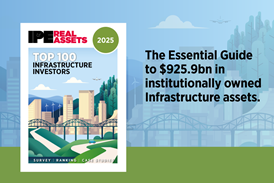The investment features of real estate make it an ideal asset class for institutional investors’ portfolios. However, in reality, this asset class has a relatively small weighting in most portfolios, writes Barbara Knoflach in the September edition of PropertyEU Magazine.

At present the allocation to real estate for global institutional investors is between 6% and 8% on average, which is small relative to equities or bonds, especially when you consider that real estate accounts for 12%-15% of the global market portfolio. It is even more striking given that most academic studies agree that adding real estate improves a portfolio’s risk-return profile and that the average recommended allocation to real estate is around 15%.
We believe that this will change, for both strategic and tactical reasons. The strategic case is closely related to the intrinsic characteristics of real estate. The asset class is defined by a high and stable income yield and it maintains its real value in the longer term. These features will be supported by strong fundamentals as economic growth and urbanisation trends result in healthy occupier demand for real estate.
Real estate is also a powerful diversifier, as it displays low or negative correlations with bond and stocks. Being a private investment, it tends not to move in tandem with traditional asset classes, as it is relatively illiquid and trading in public markets is very limited. Finally, real estate has a potential duration that matches a significant part of the average pension fund’s liabilities.
The tactical case for real estate is that its bond-like characteristics make it particularly attractive at a time when sovereign bonds are very expensive and bond yields extremely low or, in some cases, negative. As bonds are still the main asset class in institutional portfolios in the majority of developed countries, bond markets are likely to be the main source of risk due to rising bond yields. As the baby boomer generation approaches retirement, their pension plans are most at risk due to the impact from losses on bond portfolios.
From the perspective of optimal asset allocation, a likely result is that many investors, who are still largely under-allocated to real estate in their mixed-asset portfolios, will aim to increase their exposure to this asset class. This is already evident from different investors’ surveys around the world.
Demand for real estate will mainly come from the following channels: a) the rise of an affluent class and high net worth individuals (HNWIs); b) the expansion of existing and the emergence of new sovereign wealth funds and c) growth in defined contribution (DC) schemes. Another contributor to stronger demand for real estate will be the ongoing growth in institutions’ assets. Specifically, we expect global pension assets to grow strongly over the next few years, due to increased savings and more government action to impose forced savings, in both developed and developing markets. We expect total real estate assets under management to rise by €0.7 to €1.4 tln over the next five years. It is important to note that, although Asia will witness the strongest growth, the established markets of Europe and North America will – comfortably – still account for the largest share.
Overall, we believe that the markets with the most capital to spend on real estate will remain the mature ones, particularly the US. Other important players will be the UK, Germany, the Netherlands and Japan.
The burning question is whether there is enough real estate to support a substantive switch in asset allocation. At the moment, supply of new buildings is at a historic low, at least in the developed world. This has two main effects on the market: first, it supports rental values, which is quite useful considering that, while economic fundamentals are improving, risks are skewed to the downside due to economic and geo-political factors. Secondly, low supply of real estate restricts the availability of good investment product, which, in turn, results in downward pressure on yields, at least for good, core-like product.
In the future, however, less reliance on yield compression and more attention to asset management will be the key to solid risk-adjusted returns. Ultimately, the asset manager that can provide a clear strategy, thorough knowledge of markets and sectors and aligned interests of all parties will earn investors’ trust.
Barbara Knoflach is deputy chief executive, in charge of investment management at BNP Paribas Real Estate










